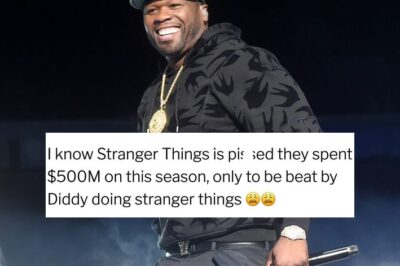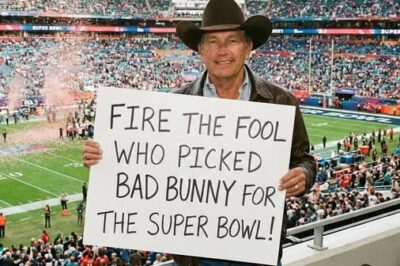The Super Bowl halftime show—an annual collision of sport, spectacle, and mass-market pop—found itself in the crosshairs again this week as segments of the NFL community lashed out at the league’s choice of Bad Bunny to headline the 2026 edition. What began as routine grumbling from message boards and talk-radio callers escalated into pointed critiques from former players and a handful of club insiders who argued the pick was a “brand mismatch.” Then Kansas City Chiefs star Travis Kelce weighed in—and the conversation changed.
Kelce’s response, delivered with a combination of candor and gravity that surprised even longtime observers, was not a tepid plea for calm. It was a recalibration. He acknowledged the friction swirling around the booking, noted the league’s responsibility to steward the game’s biggest stage, and then pivoted hard: the halftime show, he argued, is meant to be a gateway, not a gatekeeper. “We can love football and still make room for a global artist,” he said, urging fans to judge the performance on execution rather than expectation. The tone—measured, unscripted, and devoid of the usual social-media swagger—left many followers momentarily speechless.
Inside league circles, Kelce’s stance landed with uncommon weight. Superstars often sidestep culture-war flashpoints; Kelce stepped through one, framing the halftime debate as a test of the NFL’s breadth rather than its boundaries. He reminded audiences that the championship broadcast is a tent big enough to hold kickoff rituals, a few hours of bruising chess, and a 12-minute pop summit designed for a global television audience. To critics charging that the booking signals mission drift, he offered a counter-thesis: cultural inclusion is compatible with competitive intensity.
Reaction arrived in two waves. Supporters of the league’s choice seized on Kelce’s comments as a model for how to hold standards without narrowing the stage, praising his willingness to defend a decision that, on paper, does little for his personal brand. Detractors, while unmoved, recalibrated their argument. Instead of focusing solely on the artist, they homed in on process—calling for clearer selection criteria, stronger advisory panels, and earlier communication to reduce backlash once a headliner is locked.

Marketing executives and broadcast partners took careful notes. The halftime brand calculus has grown more complex in recent years, balancing cross-cultural reach with sponsor sensitivities and a fan base that spans generations and geographies. In that context, Kelce’s intervention functioned as a pressure valve. By reframing the moment as an opportunity for the league to showcase range, he gave advertisers a talking point and producers a mandate: deliver a show that feels unified, muscular, and unmistakably Super Bowl, regardless of genre.
For the locker room, the subtext mattered. Players field endless questions about off-field narratives; few want halftime to become another weekly referendum. Kelce’s message—let the music speak, then return to football—signaled a desire to protect game-week rhythms without ignoring the cultural stakes. Teammates echoed the sentiment privately: control what you can, respect what you can’t, and save the loudest statement for the scoreboard.
What happens next is predictable and pivotal. Rehearsals will proceed under a brighter spotlight. Guest rumors will swirl. The production team will thread the needle between authenticity and mass appeal. But the fuse has already been reset. Rather than a binary fight over whether Bad Bunny “fits,” the question—thanks to Kelce—has become whether the NFL can stage a halftime that reflects the league’s scope without fracturing its core. On that measure, the ball is back where it belongs: on the field, under lights, with millions ready to decide for themselves.
News
JON BON JOVI JUST OPENED AMERICA’S FIRST 100% FREE HOMELESS MEDICAL CLINIC — “THIS IS THE SOUL I WANT TO LEAVE BEHIND”
A dramatic story has been circulating online claiming that Jon Bon Jovi quietly opened “America’s first 100% free homeless medical clinic,” a 250-bed facility…
“The Fire Is Still Burning”: Jon Bon Jovi Breaks His Silence After Surgery With a Message of Gratitude and Grit
In a moment that immediately calmed—and moved—fans around the world, Jon Bon Jovi has shared a heartfelt update following surgery,…
Rockefeller Center Glows as Jon Bon Jovi and P!nk Deliver a Holiday Duet That Turns the Plaza Into One Big Choir
Rockefeller Center has a way of making December feel like it belongs to everyone. The lights don’t just decorate the…
Jon Bon Jovi’s “Intergalactic Peace Prize” Joke Tour Hits Late Night, With Jimmy Kimmel Interview Teased as a Must-Watch Moment
Jon Bon Jovi is taking a wildly imaginative victory lap through late-night television after a tongue-in-cheek announcement on The Late Show…
50 Cent’s Streams Surged 30% After Diddy Documentary Release
Rapper Curtis “50 Cent” Jackson’s music catalogue got a big streaming boost in the week after his anticipated docuseries was…
GEORGE STRAIT SPEAKS OUT AGAINST BAD BUNNY SUPER BOWL SELECTION – DEMANDS FIRING OF DECISION-MAKERS AND CALLS FOR COUNTRY MUSIC ONLY
NFL Commissioner Roger Goodell has quashed speculation that Bad Bunny could be dropped as next year’s Super Bowl halftime performer, despite an online…
End of content
No more pages to load












